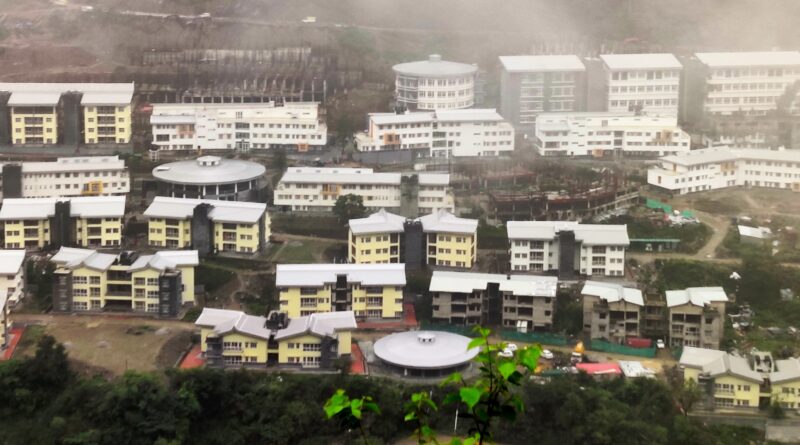IIT Mandi identify structure of nCoV proteins suppress host immune system & disrupts its Protein
A joint team of researchers beloonged to Indian Institute of Technology Mandi (IIT Mandi)
identified the structure of a key protein in the COVID-19 virus, which suppress the host human cell
immune system and disrupts its own protein.
This revelation would help the researchers to understand the mode of action of this fatal
virus severity of outbreak, super spreading from one person to other beside
to help development of antiviral therapies.
The paper published in the journal ‘ Current Research in Virology by a team led by Dr. Rajnish
Giri, Assistant Professor, School of Basic Sciences and other ssesearch scholars, Amit Kumar,
Ankur Kumar and Prateek Kumar, along with Dr. Neha Garg from the Banaras Hindu University
claimed.
We know that there is no definite treatment of Covid-19 and doctors simply treat the nCoV
symptoms like high fever and decongestion etc . The patients have to toil hards
for entire incubation period only leaving the disease to fight with immune defence system.
We also know that there is no confirmed antiviral therapy that could stop viruses from replicating
in humans.
One route to neutralising the viral attack is its proteins; such an approach holds true for the
COVID-19 virus as well and scientists across the globe are involved in studies to elucidate the
structure and functions of these proteins .
Paper claimed that nCoV compriused of 16 non-structural proteins (NSP1–NSP16),
out of which one (NSP10) plays a vital role in the pathogenicity (ability to cause disease)
of the virus. The NSP1 disrupts the proteins
the host cell and suppresses its immune functions.
Its importance can be understood by the fact that it is also called the ‘host shutoff factor’.
Particularly Nenad Ban and colleagues have found that if the C-terminal region of NSP1 i.e.
131-180 residues are removed from NSP1 then NSP1 is unable to stop the translation
by ribosomes. It is therefore important to understand the molecular mechanisms,
biophysical interactions, and chemistry of the interplay of the NSP1 with the host cell.
“Earlier in 2020, we have shown through bioinformatics studies that NSP1 C-terminal
region has intrinsic disorder propensity between 0.4 to 0.5 scales, i.e. very close to borderline
of intrinsic disorder prediction.
However, without experimental studies we were not sure that this 131-180 amino acid
region is actually an intrinsically disordered protein region. Generally, these regions are
unfolded in solution but are folded into particular conformations when binding with specific
molecules or partners inside the host cells”, said Dr. Rajnish Giri while explaining the recent
developments to his previous research.
The IIT Mandi team has experimentally studied the structural conformations of SARS-CoV-2
NSP1 under various conditions – in an organic solvent, membrane mimetic environment, and
inside liposomes.
Using analytical techniques such as circular dichroism spectroscopy, fluorescence spectroscopy,
and molecular dynamics simulations, the researchers have shown the dynamic changes in the
conformation of the IDR of the NSP1, in response to its surroundings, due to hydrophobic
and electrostatic interactions between the protein and the environment.
Our finding provides valuable insight into disorder-order conformation of the NSP1 C-terminal
region (residues 131-180) of the SARS-COV2 virus under various environments, which will help
in understanding the broader aspect of NSP1 and its interactions with binding partners that are
currently unknown”, said Dr. Giri.
Understanding the conformational structure and associated functions of key viral proteins such
as the NSP1 can eventually help develop therapeutics that can target these proteins and stop
the virus in its tracks. Studies such as those conducted by Dr. Giri and his co-workers can bring
this approach closer to reality.



